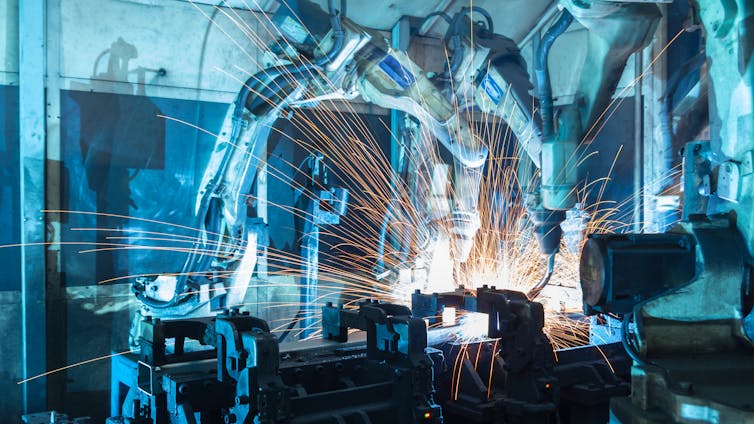
José Manuel Torralba, IMDEA MATERIALS
What role does artificial intelligence play in a materials factory? How can it help choose the best combination of ingredients to achieve specific properties for a wide range of purposes? It turns out that AI is becoming essential for digesting the hundreds of thousands of possible chemical combinations that exist when forming an alloy or a ceramic or polymeric compound, among hundreds of possible manufacturing routes.
The introduction of new sustainability criteria, pushing us to manufacture without emitting CO₂ and without using essential (critical or strategic) raw materials, means that the possible combinations of raw materials, manufacturing techniques, and variables that restrict both materials and processes are almost infinite.

How Algorithms Help Us
We now have material-characterisation techniques that work from the atomic scale to the macro scale, allowing us to understand materials, their defects, and the causes behind them very well. This knowledge widens the range of parameters we can consider when designing a new material.
Managing all of this would not be humanly possible without simulation algorithms that can work with almost infinite variables and are capable of proposing and testing custom combinations.
To do this, we need enormous computing power, which today is within our reach thanks to advanced processing systems that allow us to perform complex calculations in short periods of time. This will improve even further when quantum computers become commercially available. Today, with a mid-range laptop, we can perform calculations that just a few years ago required a cluster with many processors.
How to Create Useful Data
But all of this has a weakness: the need for data. AI algorithms require thousands of reliable data points to feed their calculation routines and offer viable solutions. These come from open research databases (the European Union now requires open data management for all projects it funds), technical handbooks, scientific publications, etc.
However, this is not enough. To generate abundant and reliable data, we must turn to what are known as high-throughput manufacturing and characterisation techniques. With them, we can produce data that is in some way linked to our design’s manufacturing methods and the property profile we expect from our future material.
Today, there are techniques that allow us to manufacture libraries of alloys in very little time, with hundreds of different compositions. There are also characterisation techniques that, with a small test, provide information related to multiple material characteristics. These data, combining specific properties and defined manufacturing methods, are extremely valuable for training AI tools.
Human-Free Laboratories
We can take this a step further if robots handle these high-throughput techniques, enabling 24/7 operation. Robotised laboratories already exist, where one workstation manufactures the material and others test its various properties, with automated systems managing all processes. The results are stored to train AI tools.
At the IMDEA Materials Institute in Madrid, there is a Robotlab where polymer nanocomposites are fabricated and their mechanical properties and possible degradation are tested, all without human involvement.
This is not the first laboratory to develop this idea. There are other initiatives, though these are usually linked to the discovery of small molecules or the synthesis of liquid-based materials, or, in the pharmaceutical industry, to the development of new medicines.

Manufacturing Materials at Lightning Speed
Google has created a tool called GNoMe, capable of generating hundreds of thousands of recipes for new stable compounds with properties suitable for developing supercomputers or next-generation batteries.
Its database offers nearly 400,000 new materials with sufficient potential to be manufactured and tested, according to an article published in Nature in 2023.
In a later study, also published in Nature, researchers present the so-called A-Lab, where these materials are synthesised entirely by robots (at a rate of 41 compositions in 17 days) and their crystal structures are verified using X-ray diffraction.
At IMDEA Materials, we are currently developing another robotised laboratory for biomaterials used in tissue engineering. According to Dr. Maciej Haranczyk, who leads the team, this facility will allow “the experimental work of a doctoral thesis, normally spanning more than three years, to be completed in less than a week.”
The end of human work?
Many people worry that all this will eliminate the need for human workers, a debate that goes back to the Industrial Revolution. The steam engine was supposed to cause massive unemployment. Then automation was the culprit, then robotisation, and now artificial intelligence.
However, according to data from the Institute of Engineering of Spain, the countries with the highest levels of robotisation are precisely those with the lowest unemployment rates.
José Manuel Torralba, Full Professor at the Carlos III University of Madrid, IMDEA MATERIALES
This article was originally published in The Conversation. Read the original (content in Spanish).
